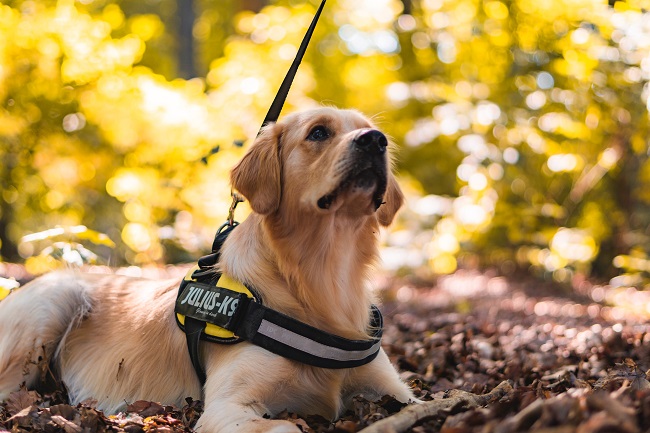
If you’ve wondered what’s going on with peacocks on airplanes and dogs at the salad bar in the grocery store, you’re not alone. Veterinarians are concerned about the unfortunate trend of pets being mistakenly, and sometimes fraudulently, presented as either service animals or emotional support animals. It’s a complex topic, and the more we all know about it, the better everyone’s rights are protected, particularly those who genuinely depend on their service animals and emotional support animals. Service animals and emotional support animals each work with their handler for the benefit of that handler, and each has some federal rights of access, but there are important differences between them. What defines these groups and what are the differences in their rights of access?
Service Animals
As defined by the Americans with Disabilities Acts are trained to perform one or more specific tasks that help with the disability of the owner/handler. Are nearly always dogs. Can go anywhere the public is allowed to go. Have no certification or standardized form of proof, as this is seen by the ADA as a potential barrier for those who need service animals.
Emotional Support Animals
Defined by the Aircraft Carrier Access Act (ACA) and the Fair Housing Act (FHA) provide emotional support to those with psychological/psychiatric disorders or disabilities simply by their physical presence. They do not perform specific tasks. Are not limited as to species, though airlines may decline to accommodate emotional support animals that could be dangerous to other passengers. Have federal rights of access only on airplanes and in housing situations. Do require documentation from a licensed mental health professional who is currently treating the owner/handler stating the necessity of the emotional support animal.
The very important distinction to remember is the task(s) that service animals perform, which could be performed on command or on cue. There are psychiatric service animals, which are different from emotional support animals because they do perform such a task. It might be fetching medicine for a person on command, or it might be alerting a veteran suffering from PTSD that they are in a stressful situation and should remove themselves. It is also worth noting that occasionally miniature horses are service animals due to their longer life span: training a service animal can be very costly and the loss of one can also be emotionally distressing to their handler.
There is a final class of assistance animals that have no federal rights of access: the animals used in animal-assisted intervention. These animals are differentiated from service animals and emotional support animals by the fact that they work with their handlers for the benefit of other people. They include animals used in animal-assisted education (reading dogs), animal-assisted therapy (therapy dogs), and animals used in other animal-assisted activities (such as the visitation dogs in nursing homes and hospitals). Although the term “therapy dog/therapy animal” is frequently used, it has a very specific meaning: it is a dog or other animal used as part of a goal-directed therapeutic intervention by a licensed therapist. The federal rights of access granted to service animals and emotional support animals are important for those who depend on these animals and should not be abused by others. Businesses have certain rights with regard to these animals as well. And any business or facility may choose to grant access to any pet or other animal.
More information on all types of assistance animals, including printable infographics for businesses and others, is available at VtVets.org under the One Health link.
Eileen M. Wolfe, DVM
Related Articles
How to Identify and Treat 6 Common Dog Health Problems
The Value of CBD Products for Pets




Comment here